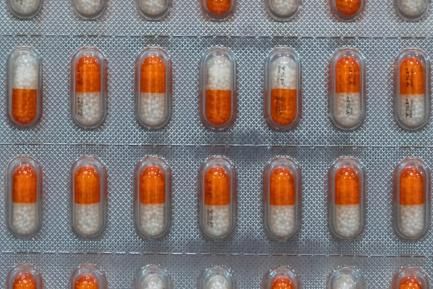
The Spanish pharmaceutical industry
The pharmaceutical industry is a key and strategic sector for Spain’s economy, as was clearly demonstrated by the pandemic. In the past 25 years, the sector has become hugely significant and an important driver of Spanish exports and private R&D investment. Nevertheless, its production capacity still has room for improvement. The future of Spanish industry should be more closely linked to the pharmaceutical sector with a commitment to promote its growth, not only for strategic purposes but also for purely economic reasons, since it is an extremely competitive industry with a great capacity to generate good quality jobs that would help to modernise Spain’s economy.
The emergence of COVID-19 has hit the global supply chains hard, resulting in shortages of some products (mainly intermediate goods) and price tensions. This has been, and continues to be, the case of microchips or semiconductors, whose scarcity is causing disruptions in European automobile assembly lines.18 Another sector in which such disruptions were particularly intense and evident has been pharmaceuticals. From the beginning of the pandemic until the middle of last year, there were shortages of certain pharmaceutical products such as testing kits (PCR and antigen) and masks, not to mention the shortage of vaccines during the first four months of 2021. All this indicates that the pharmaceutical industry is a key sector that nevertheless lacks the necessary capacity to ensure a certain degree of independence from the rest of the world, highlighting the need to commit decisively to developing this sector further, bearing in mind that it is extremely productive and competitive both in Spain and in the rest of the EU.
- 18See the article «The global chip supply: disruptions and new trends» in the Dossier of the Monthly Report of February 2022.
The nature of the pharmaceutical industry
The pharmaceutical industry is not a very large sector in Spain’s economy, although it is not insignificant either. According to 2019 National Accounts data, pharmaceuticals directly generated €6,846 million in gross value added (GVA), 0.6% of the total Spanish economy. It is the eighth largest industrial sector in the country, accounting for 5% of the manufacturing industry’s GVA.
Like any other economic activity, the pharmaceutical industry also generates activity indirectly (through a knock-on effect), thanks to the important ramifications it has for other sectors, such as healthcare and retail, through the large network of pharmacies present in Spain. According to our calculations, the pharmaceutical industry’s knock-on effect is 76%, which means that for every 100 euros of value added it generates directly, the sector indirectly contributes an additional 76 euros in other sectors.
If the pharmaceutical industry is to be singled out in particular, it is essential to mention its prominent role in exports and R&D investment. Specifically, pharmaceuticals were Spain’s fourth most exported product in 2020, accounting for 4.9% of all goods exported (12,777 million euros).19 It also drives R&D investment, with the sector mobilising 4.9% of total investment in 2020 according to INE data (8.8% if public authorities and universities are excluded) and accounts for nearly 20% of R&D investment in manufacturing industry.
- 19Only TARIC categories 87-Motor vehicles, 84-Mechanical machinery and apparatus, and 85-Electrical apparatus and equipment achieved more exports in 2020 than category 30-Pharmaceuticals.

The pharmaceutical industry is also considerably productive, with a gross value added per employee that more than doubles the average for the Spanish economy and the manufacturing industry as a whole. This high productivity is the result of several factors, including: (i) the high proportion of qualified personnel, with 62% of its employees holding higher degrees (the average for Spain is 45%); (ii) the valuable leverage provided by the sector’s extensive investment in R&D, and (iii) the significant share of large companies, being the second industrial sector with the highest percentage of companies with over 250 employees (18% compared to 1% for the economy as a whole).
The pharmaceutical industry is highly productive, with a gross value added per employee that more than doubles the average for the Spanish economy.
With respect to this last factor, and as can be seen in the chart below, the role played by large companies is crucial, not only in terms of number but also in turnover and employment. In addition, their high concentration of turnover confirms the enormous productivity they contribute to the sector as a whole: the fact that it is a sector made up of large firms is key its strong competitiveness.
The performance of Spain’s pharmaceutical industry in recent decades
As we have seen, the characteristics of the pharmaceutical industry reveal that, although it accounts for a relatively small part of the Spanish economy as a whole, it is an extremely relevant and competitive player. However, not so long ago its capacity was considerably lower than it is today: the transformation undertaken by its companies to become more competitive and its openness to foreign markets have been two growth factors that have turned it into one of Spain’s most dynamic industrial sectors.
The transformation of pharmaceutical companies to become more competitive and their openness to foreign markets has turned the sector into one of Spain’s most dynamic.
As shown in the following charts, the pharmaceutical industry has grown substantially over the last 25 years. Both GVA and, above all, exports of pharmaceutical products have increased at a considerably faster rate than the average for the Spanish economy and manufacturing industry. Specifically, the GVA of the economy as a whole grew at an average of 2.1% per year between 1995 and 2019 while, over the same period, the GVA of the pharmaceutical industry increased at a rate of 5.6% per year (more than double). It is also noteworthy that, according to our estimates, the sector’s GVA did not decrease in 2020 but grew by 2.1%. The trend in exports has been similar, with a growth rate in the past 25 years that has doubled the increase in total exports (10.7% vs. 5.4%), resulting in the sector increasing its share of Spain’s exports from just 1.4% in 1995 to 4.9% in 2020.
The pharmaceutical sector during the pandemic
The pandemic has been an unprecedented shock for the Spanish economy as a whole but the pharmaceutical industry hardly suffered at all. So much so that, during May 2020, the month in which furloughs were most extensively implemented, the proportion of jobs affected by furloughs in this sector barely reached 1.6% of the total, while in manufacturing industry as a whole the proportion was 16.4%. This is not the only evidence that helps us to infer the almost zero impact of the restrictions on the sector: the rest of the activity indicators were positive for 2020 as a whole, as can be seen in the chart below. This positive trend intensified in 2021, with the exception of exports, posting even higher growth than in 2020 and a particularly strong year-end record for production, employment, turnover and even exports, which had suffered particularly in Q3 2021 but recovered strongly at the end of the year.
This excellent performance by the pharmaceutical industry since 2020 has been cemented by huge growth in demand. In fact, not only foreign but also domestic demand has clearly played a part in the industry’s very positive figures. One of the channels for domestic demand is the extensive network of pharmacies in Spain, which have seen considerable growth in sales thanks to the big increase in demand for drugs linked to the treatment of COVID-19 symptoms, the massive sale of masks and, more recently, antigen tests. According to CaixaBank card activity indicators, pharmaceutical retail turnover grew by 23% in 2020 then eased by 1.2% in 2021, although it ended the year with 33% growth in December. This strong interrelationship between production and the domestic retail network makes it even more desirable to develop the pharmaceutical industry as it highlights its potential to indirectly generate economic growth.
One of the channels for domestic demand is the extensive network of pharmacies in Spain, which have seen considerable growth in sales.
Committed to boosting the pharmaceutical industry
Although the pharmaceutical industry has been a particularly dynamic sector in recent decades, it is not yet a benchmark at a European level. Although, in absolute terms, Spain’s pharmaceutical industry is the fifth largest in the euro area, after Germany, France, Belgium and Italy, its relative weight in the national economy (0.6% of GVA) is close to, but below, the euro area average (0.7%), as can be seen in the following chart, and it is far from the outstanding cases of Belgium (2.5%) and Slovenia (2.9%), both markets benefitting from head offices being located in their countries.20
Moreover, despite being an industry that generates a significant volume of exports, Spain has historically had a deficit in its balance of trade in pharmaceutical products. Specifically, in 2020, pharmaceutical exports accounted for 1.1% of GDP while exports as a whole represented 1.6%. This deficit comes mainly from trade with the rest of the EU, the USA and China, while Spain exports 30% more than it imports from Switzerland, our second largest trading partner. Once again, these data show the production capacity of Spain’s pharmaceutical industry could be better, given its large deficit with the rest of the EU. Nevertheless, it has, but it has an attractive degree of competitiveness and specialisation, which makes it capable of achieving a trade surplus with one of the most powerful producers in the world, Switzerland, a country that has a larger pharmaceutical industry than Germany.
It is also useful to study the extent to which the production of pharmaceutical products depends on other countries. To this end, we have analysed the trade balance of chemical raw materials (CNAE 201 and 205), which are key to the manufacture of pharmaceutical products. Spain also has a trade deficit in this area, although its dependence on markets outside the EU leans much more towards China and India, two key exporters of chemical raw materials on a global scale.
- 20Data not available for Ireland. The euro area average is calculated using the 18 countries with available data.
In conclusion, although Spain’s pharmaceutical industry is very competitive and dynamic, it still has considerable margin to achieve a more relevant role in the national economy, something that has become evident during the pandemic with the lack of production capacity for key products and consequent supply shortages in 2020. The pharmaceutical industry should not be left to achieve such prominence on its own, even though it has already shown itself to be quite capable of doing this thanks to its outstanding competitiveness. Its role must be strengthened both at a strategic level, ensuring a key industry has sufficient production capacity, and at an economic level, as it is a sector with high added value that is extremely productive, an investor and exporter and capable of generating high quality jobs.
Spain’s Recovery, Transformation and Resilience Plan contains actions that could boost the growth of the pharmaceutical industry in chapters 12 (Industrial Policy 2030) and 18 (Renewal and expansion of the capacities of the National Health System), with a proposal to review the regulations regarding drug development and increase investment in R&D. The enormous prominence achieved by the pharmaceutical industry during the pandemic could therefore become more than a mere anecdote; rather an opportunity to provide the sector with the necessary tools to continue growing and gaining relevance in the Spanish economy.



